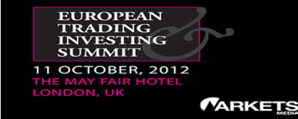Courtesy of Jason Zweig / WSJ Columnist
On Sept. 21, Charles Schwab, SCHW -0.74%the discount broker, cranked up its publicity machine to announce it is cutting expenses on its 15 exchange-traded funds, or ETFs, by an average of 50%, to as low as 0.04%. Invest $10,000 and you can pay as little as $4 a year.
Could expenses go to zero? “Well, with our pricing adjustment, they do round to zero,” quips Marie Chandoha, president of Charles Schwab Investment Management. Schwab isn’t alone: 16 ETFs charge less than 0.1% in annual expenses, according to XTF.com, an ETF-rating website. Investing is within spitting distance of becoming free—and that is unambiguously worth celebrating.
Nevertheless, investors need to bear in mind that annual expenses are the most visible—but far from the only—cost of an ETF. Even as annual expenses race toward zero, you can still get clipped on other costs if you aren’t careful.
Let’s take a moment to put what is happening into historical perspective. In 1976, Vanguard Group introduced First Index Investment Trust (now the Vanguard 500 Index Fund ), which sought to replicate the return of the Standard & Poor’s 500-stock average. The fund’s expenses the first year, says Vanguard’s founder, John C. Bogle, ran at 0.43%.
Today, the cost of a $10,000 account in the same portfolio—now available both as the Vanguard 500 Index mutual fund and the Vanguard S&P 500 VOO -0.45%ETF—is as low as 0.05%. That is less than one-eighth what the same portfolio cost a generation ago and roughly 98% less than what a conventional mutual fund cost in the 1970s.
“There’s still lots of room for improvement” on fees, says Vanguard’s chief investment officer, Gus Sauter. “There’s a tremendous amount of [downward] pricing pressure in the marketplace now.”

 .
.



 Considering the issuance calendar is chock full of interesting, high yield deals, we’re hearing that tix for the Oct 11 European Trading & Investing Summit at the May Fair Hotel in London are oversubscribed.
Considering the issuance calendar is chock full of interesting, high yield deals, we’re hearing that tix for the Oct 11 European Trading & Investing Summit at the May Fair Hotel in London are oversubscribed.